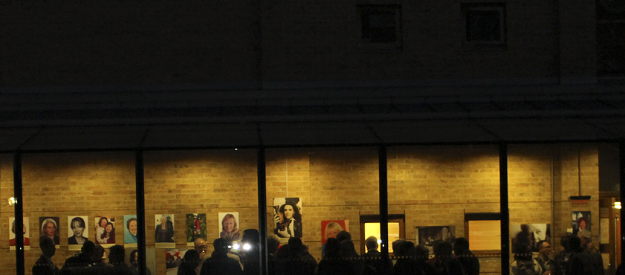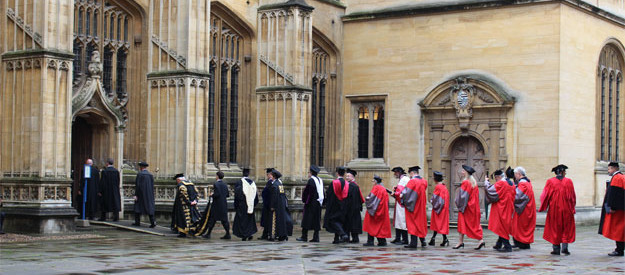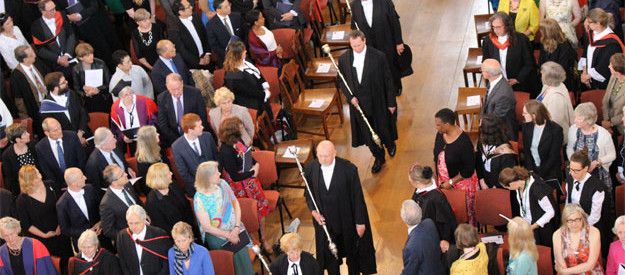Welcome to the Oxford Emerging Viruses Symposium
Topics of interest:
o Virus reservoirs
o Virus transmission
o Virus evolution
o Immune responses
o Novel diagnostics
o Therapeutics (drugs, mAbs)
o Vaccines
o Serology
We particularly encourage final year doctoral students and early/mid career postdoctoral researchers/junior group leaders to submit oral abstracts, as we believe this event will provide their research excellent exposure, critical analysis and feedback by the attending senior researchers, and new career opportunities.
Please send your abstracts (250 words incl. affiliations of all authors) for consideration as short oral presentations OR posters to ‘VirusesOxford@gmail.com‘.
We look forward to your participation at Emerging Viruses 2019.
Co-Chairs:
Dr Nigel Temperton, University of Kent, UK
Dr Simon Scott, University of Kent, UK
Dr Edward Wright, University of Sussex, UK
Speakers and agenda
Monday 09th September
0845: Registration and welcome coffee
0920: Welcome by the symposium chairs
Session 1: Chair Dr Simon Scott
0930: Dr Nigel Temperton, University of Kent, UK
Tropism and neutralisation studies on bat influenza H17
0950: Dr Andrew Lane, The Native Antigen Company, UK
Considerations for antigen design in developing serological assays
1010: Dr Richard Urbanowicz, University of Nottingham, UK
Ebolavirus evolution and tropism: What can pseudotypes tell us?
1040: Dr Roger Hewson, Public Health England, UK
Lassa fever virus and other emerging mammarenaviruses
1110: Refreshment break, networking and posters
Session 2: Chair Dr Nigel Temperton
1140: Dr Janet Daly, University of Nottingham, UK
Lessons from three decades of equine influenza research
1210: Dr Mark Page, National Institute for Biological Standards and Control (NIBSC), UK
Reference materials for assay calibration and harmonisation – why they are useful and necessary
1240: Mr Martin Mayora-Neto,University of Kent, UK
Lyophilisation, Storage Stability and Epitope Modification of High Titre Filovirus-Pseudotyped Lentiviruses for use in Antibody Assays
1300: Lunch (provided), networking and posters
Session 3: Chair Dr Janet Daly
1400: Miss Makovska Iryna, National University of Life and Environmental Sciences of Ukraine, Ukraine
Revolutionary changes in sources of rabies virus from 1950 to 2018 in Ukraine
1420: Dr Edward Wright, University of Sussex, UK
Emerging virus envelope proteins – antibodies and epitopes
1440: Dr Michela Mazzon, Virology Research Services Ltd, UK
Virology research: Expanding capabilities through outsourcing
1500: Dr Valentina Riva, National Research Council, Italy
A unique domain for a unique target: a novel strategy to develop selective DDX3X RNA helicase inhibitors to fight emerging viruses
1520: Refreshment break, networking and posters
Session 4: Chair Dr Edward Wright
1550: Professor Jonathan Heeney, University of Cambridge, UK
Understanding Immune Correlates of Protection to Haemorrhagic Fever Viruses
1620: Professor Teresa Lambe, University of Oxford, UK
Viral Vectored Vaccines against Outbreak Pathogens
1650: Miss Anna Parys, Ghent University, Belgium
Exploring different heterologous prime-boost vaccination regimens with H1N1 influenza viruses of swine
1710: Professor Katie Ewer, University of Oxford, UK
Durability of immune responses induced by 3 leading candidate Ebola vaccine regimes; rVSV ZEBOV, ChAd3 EBO Z-MVA BN-Filo and AdHu26.ZEBOV-MVA BN Filo
1730: Closing remarks by the symposium chairs
Posters
Characterisation of Chikungunya pseudotyped virus for use in antibody neutralisation assay
Yemisi O Adedeji1, Emma M Bentley2, Sarah Kemspter1
1Division of Infectious Disease Diagnostics, National Institute for Biological Standards and Control, South Mimms EN6 3QG, UK
2Division of Virology, National Institute for Biological Standards and Control, South Mimms EN6 3QG, UK
Chikungunya virus (CHIKV) is a positive-sense single stranded RNA, mosquito borne alphavirus that belongs to the Togaviridae family. Since the re-emergence of CHIKV, the virus has spread to Europe and the United States drawing more global research interests and considerations are continuously been made to identify potential vaccines and therapeutics. A standard serum that is known to confer protection against CHIKV infection would be a useful reference material that may be beneficial to the vaccine field as an in vitro reference of protection to direct vaccine development. The use of this reference material would also enable the comparison of assays between laboratories worldwide. Convalescent sera samples are been donated to NIBSC to produce this reference materials. However, the high containment requirements for CHIKV research can be a limitation. We produced CHIKV pseudotyped lentiviruses to eliminate the requirement for high level containment and specifically assess the ability of sera to inhibit CHIKV entry. We generated an enveloped pseudotyped virus particle expressing luciferase reporter protein (pHIV-CHIKV-luc) which was used to infect different cell lines to determine permissiveness to infection. This study shows that BHK-21 cells were most permissive to infection with CHIKV, and hence were used in subsequent experiments. Next, a pseudotype based antibody neutralisation assay was performed using convalescent sera and a defined monoclonal antibody (CHK-293) to assess the action of neutralising antibodies on CHIKV entry. The ability of the sera samples to block pseudotype virus entry into target cells was measured through assessing reduction in reporter gene expression in infected cells. Ongoing work aims to optimise the assay conditions and compare to wildtype CHIKV plaque reduction neutralisation test (PRNT). In conclusion, we have generated a CHIKV pseudotype virus that can be used as a serological assay to evaluating candidate CHIKV standards.
Evaluation of different pseudotyping systems to aid lyssavirus vaccine development
Bethany Auld1, Mariliza Derveni1, Thomas Simon1, Pascale Schellenberger1, Ashley Banyard1,2, Edward Wright1
1School of Life Sciences, Viral Pseudotype Unit, University of Sussex, Brighton, UK
2Department of Virology, Animal and Plant Health Agency (APHA), Weybridge, Surrey, UK
In the absence of pre- or post-exposure prophylaxis, rabies virus causes an invariably fatal disease responsible for over 59,000 human deaths per year. The rabies virus is a lyssavirus, a genus comprising of 16 distinct viral species all capable of causing rabies. The lyssavirus genus can be split into three phylogroups based on genetic and antigenic properties. Studies have demonstrated that the current rabies virus vaccine only confers protection against a subgroup of phylogroup I lyssaviruses, and as such, a novel vaccine is required to achieve coverage against all species. A fundamental aspect of the research of high category viruses, such as lyssaviruses, is the use of pseudotype viruses (PVs). Replication defective PVs allow the highly pathogenic viruses to be researched in category 2 laboratories, which can greatly enhance capabilities to investigate key research topics including vaccine design, diagnostics, and viral entry mechanisms. PVs exist as a viral core expressing only heterologous viral envelope proteins (VEPs). Different viral cores have distinct properties and so may provide better surrogates for VEPs from different viral families. Here we have compared three commonly used pseudotyping systems bearing different viral cores – human immunodeficiency virus (HIV), murine leukemia virus (MLV) and vesicular stomatitis virus (VSV) – in an attempt to identify which is the preferential surrogate for lyssavirus VEPs. Two lyssavirus VEPs from each phylogroup have been pseudotyped into each of the three systems. Purified PVs have then been compared using infection assays and nanoparticle tracking to determine biological titres and quantities of potentially non-functional particles in an attempt to identify the best surrogate for lyssavirus VEPs. From this we have identified that HIV-core PVs attain high biological titres with relatively low quantities of non-functional particles.
The Production of Reference Materials for Emerging Virus Outbreak Preparedness
Emma M Bentley, Samuel Richardson, Mark Hassall, Mark Page and Giada Mattiuzzo
Division of Virology, National Institute for Biological Standards and Control (NIBSC), Potters Bar, UK
The recent public health emergencies of international concern (PHEIC), caused by Ebola and Zika virus, have highlighted the lack of prophylactic treatments and need for effective diagnostics for emerging viruses. In response to this, we are working with the Coalition for Epidemic Preparedness Innovations (CEPI) to establish International Reference Reagents for antibody detection, which enables the comparison of results from laboratories worldwide undertaking treatment/vaccine development and efficacy clinical trials. The preferred candidate material is a pool of plasma or sera from convalescent patients as this provides a commutable standard; however, this material is hard to source. For Lassa virus antibody, we received several small donations of convalescent sera from Nigeria and Sierra Leone, tested negative for Lassa virus. Samples were characterised in-house using a VSV-based pseudotyped virus neutralisation assay and deemed appropriate candidates for a reference reagent; therefore, a small feasibility study is being undertaken with the aim to quickly establish a working reference reagent for use by vaccine developers, whilst working towards the establishment of a WHO International Standard. This will ultimately require the donation of larger volumes of sera to last 5-10 years and a WHO-sponsored International Collaborative study involving 15-20 laboratories around the World. In addition to Lassa virus, we have received endorsement from the WHO Expert Committee on Biological Standardization to produce International Standards for MERS coronavirus, Nipah Virus, Rift Valley Fever Virus and Crimean Congo-Haemorrhagic fever virus.
Attempts to pseudotype lentivirus particles with the haemagglutinin of a novel influenza virus strain for use as a tool for tropism and diagnostic studies
Cecilia Di Genova1, Sasan Fereidouni2 & Simon D Scott1
1Viral Pseudotype Unit, Medway School of Pharmacy, University of Kent, UK
2Research Institute of Wildlife Ecology, University of Veterinary Medicine, Vienna, Austria
Influenza viruses are segmented RNA viruses that can infect different avian and mammalian species, including humans. They are classified into types, A, B, C and D on the basis of internal protein antigenic and phylogenetic characteristics. Type A viruses are further classified into subtypes defined by their envelope glycoproteins haemagglutin (HA) and neuraminidase (NA). To date there are 16 HA and 9 NA avian influenza subtypes, some of which are also seen in mammals, plus two bat derived subtypes (based on isolated RNA sequences but no virus as yet). The reservoir for Type A viruses are migratory, often aquatic birds. Recently, partial genomic RNA sequences from an apparently novel strain (denoted Kz52) were isolated from a dead pochard duck near the Caspian Sea in Kazakhstan. Sequence analysis revealed Kz52 to be most closely related to H9. As the virus itself has not been isolated to date, in order to conduct experimental research on the virus (e.g. cell tropism/receptor and develop diagnostics) we have been attempting to generate Kz52 HA pseudotyped lentiviruses as a research tool. This typically requires expression of the pseudotype components from plasmids co-transfected into producer cells (i.e. HEK293). A quadruple plasmid system was employed; HIV gag-pol, viral envelope (HA in different expression vectors), genome carrying luciferase reporter gene and lastly several proteases of the serine family (including trypsin, HAT, KLK-5, TMPRSS2, TMPRSS3, TMPRSS4 & TMPRSS6) which are known to cleave the HA of other influenza subtypes during particle maturation. The impact of human codon optimization of the Kz52 HA gene was also assessed. Site-directed mutagenesis (SDM) was performed to modify Kz52 cleavage site (P-I-K-E-T-R) into the HA cleavage site of A/HongKong/1073/99 (H9N2) (P-A-R-S-S-R) and vice versa in order to further investigate the activation of the HA. Data comparing these various approaches for Kz52 pseudotype generation will be presented.
Influenza D pseudotyped lentiviruses, validation, and applications
Juggragarn Jengarn1, Janet Daly2, Pauline Van Diemen3, Simon Scott1, Nigel Temperton1
1Viral Pseudotype Unit, Medway School of Pharmacy, University of Kent and University of Greenwich, Chatham, Kent, UK
2School of Veterinary Medicine and Science, University of Nottingham, Sutton Bonington, UK
3Avian Virology and Mammalian Influenza Virology Department, APHA-Waybridge, New Haw, Addlestone, UK
Influenza D virus (IDV) has been identified in several animals, such as cattle, swine, sheep, camel, and potentially human from across the world. It has the potential to be a zoonotic disease leading to multiple studies to diagnose these animals. Here, we use pseudotyped lentivirus (PVs) technology to develop a cell-based assay to diagnose prior-exposure to influenza D in animals. We constructed the glycoprotein, hemagglutinin fusion protein (HEF), plasmid of IDV (D/swine/Italy/2015) and co-transfected with lentiviral vector plasmid expressing luciferase and lentiviral Gag-Pol plasmid in producer cells (HEK293T/17). After 72 hours post-transfection, the supernatants were collected and used in titration and micro-neutralisation assays in target cells (MDCK-II). We used vaccinated pig sera of two IDV strains (D/swine/Italy/2015, and D/swine/Oklahoma/2011) to undertake a preliminary validation of the PV neutralisation assay. The pig sera of Italy strain have strong neutralising activity to PVs (IDV). Interestingly, the pig sera of Oklahoma strain have cross-reactivity to PVs (IDV). Cow and sheep sera were collected from farms throughout the UK farms to run through this PV neutralisation assay. We found that 71.03% (103 in 145 samples) of cow sera and 0.88% (1 in 114 samples) of sheep sera were positive. Collectively, pseudotyped lentivirus technology opens up the opportunities for the study of influenza D virus.
Characterization of virus-host interactions by pseudotyped viruses bearing GBV-B envelope
Kamilla Toon1,2, Mphatso Kalemera3, Machaela Palor3, Emma Bentley1, Joe Grove3, Nicola J. Rose1, Yasuhiro Takeuchi1,2 and Giada Mattiuzzo1
1National Institute for Biological Standards and Control (NIBSC), Potters Bar, UK
2Division of Infection and Immunity, University College London (UCL), London, UK
3Institute of Immunity and Transplantation, University College London (UCL), London, UK
Hepatitis C virus (HCV) is an important pathogen infecting approximately 180 million people worldwide. While the recent introduction of direct acting antivirals has been very successful, they are costly, unaffordable in resource limited areas, and drug resistant strains have begun to emerge. A vaccine is needed to reduce transmission and for eventual eradication. Animal models are needed to recapitulate the complex host reactions to infections and evaluate vaccine candidates. GBV-B a closely related virus has been used as an animal model in new world monkeys. Like most strains of HCV, GBV-B does not grow in cell culture; therefore, we have developed a retroviral pseudotype harbouring the GBV-B glycoproteins to investigate virus-host interactions and immune responses in the tamarin animal model. We have used knockout cell lines of known HCV receptors to investigate if they have a role in GBV-B cell entry. Claudin-1 has been identified as essential for GBV-B entry while other HCV receptors do not appear to have a role in GBV-B cell entry. The characterization of GBV-B’s envelope proteins’ interaction with claudin-1 can help to determine how HCV interacts with claudin-1, which could contribute to elucidating potential treatment candidates.
Application of Next Generation Phage Display technology to identify diagnostic peptides to develop a new serological assay for louping ill virus
Anitha Varghese1,2, Janet Daly1, Kevin Gough1, Mara Rocchi2
1School of Veterinary Medicine and Science, University of Nottingham, Sutton Bonington campus, Leicestershire, LE12 5RD, United Kingdom
2Moredun Research Institute, Pentlands Science Park, Penicuik, Edinburgh, EH26 0PZ, United Kingdom
Louping ill virus (LIV) is a UK endemic flavivirus vectored by Ixodes ricinus ticks. LIV mainly affects sheep and red grouse usually with a fatal outcome in the latter. The disease in sheep was controlled by a vaccine that has recently became unavailable. This is likely to lead to a rise in new cases and economical loss, especially in lambs who would have been protected by maternal antibodies. There is a need for a rapid diagnostic test as current serology diagnostics require CL3 facilities and are time consuming. Next Generation Phage Display is a technique that combines classic phage display with next generation sequencing. The main advantage of phage display is the linking of the phenotype (peptide binding properties) with genotype (the peptide gene displayed by the phagemid). Serum antibodies can be used to select specifically binding phage. Serum from LIV infected and uninfected sheep have been bio-panned against P8 linear random peptide phage library to generate a phage sub-library specific for LIV antibodies. The phage genomes will be sequenced using Ion Torrent sequencing and antigenic peptide regions ranked using Z-score analysis. The most antigenically potent peptides will be used to create a rapid diagnostic assay such an ELISA.
Optimisation and characterisation of a VSV-based pseudotype system for the serological study of emerging viruses
Mariliza Derveni1*, Rebecca Kinsley2, Emma Bentley3, Giada Mattiuzzo3, Edward Wright1
1School of Life Sciences, Viral Pseudotype Unit, University of Sussex, Brighton, UK
2Laboratory of Viral Zoonotics, Department of Veterinary Medicine, University of Cambridge, Cambridge, UK
3Division of Virology, National Institute for Biological Standards and Control, Potters Bar, UK
Newly and re-emerging viruses, including members of the Filoviridae (Ebola, Marburg) and Arenaviridae (Lassa) families that are responsible for significant viral haemorrhagic fever outbreaks, pose a serious and ongoing threat to public health, particularly in developing countries. Pseudotyped viruses, replication-deficient hybrid virions expressing the envelope protein of the pathogen of interest, offer a safe alternative to working with highly pathogenic viruses as part of research into treatment and/or vaccine development. A number of viral pseudotyping systems have been described, using different viral cores, among which the vesicular stomatitis virus (VSV)-based system is one of the most well-established, alongside the lentiviral (HIV) system. Here we describe the optimisation of a VSV-based system for the production of high-titre pseudotypes displaying Lassa virus (LASV) envelope proteins. The protocol involves recovery and amplification of VSV with a ΔGP genome displaying an exogenously expressed VSV glycoprotein, which is subsequently used to infect cell lines expressing LASV envelope proteins allowing production of VSV-core pseudotyped virus (vPV). These LASV vPVs were subsequently used in neutralisation assays alongside lentivirus-core pseudotypes (LASV lPV) with the same LASV envelope proteins, in order to compare their neutralisation profile by a panel of anti-LASV antibodies.
For regular updates follow this event on Twitter (@LPMHealthcare, #EVOX19).








